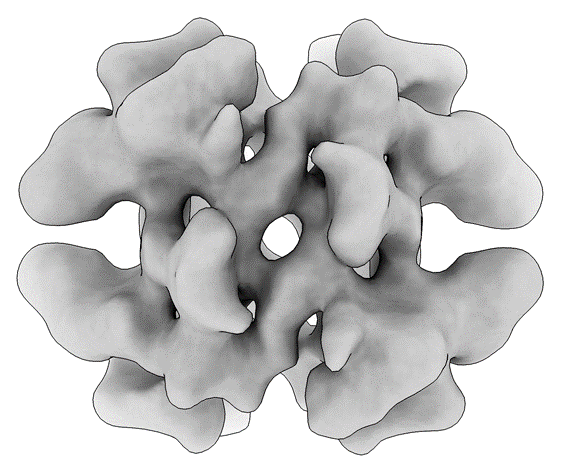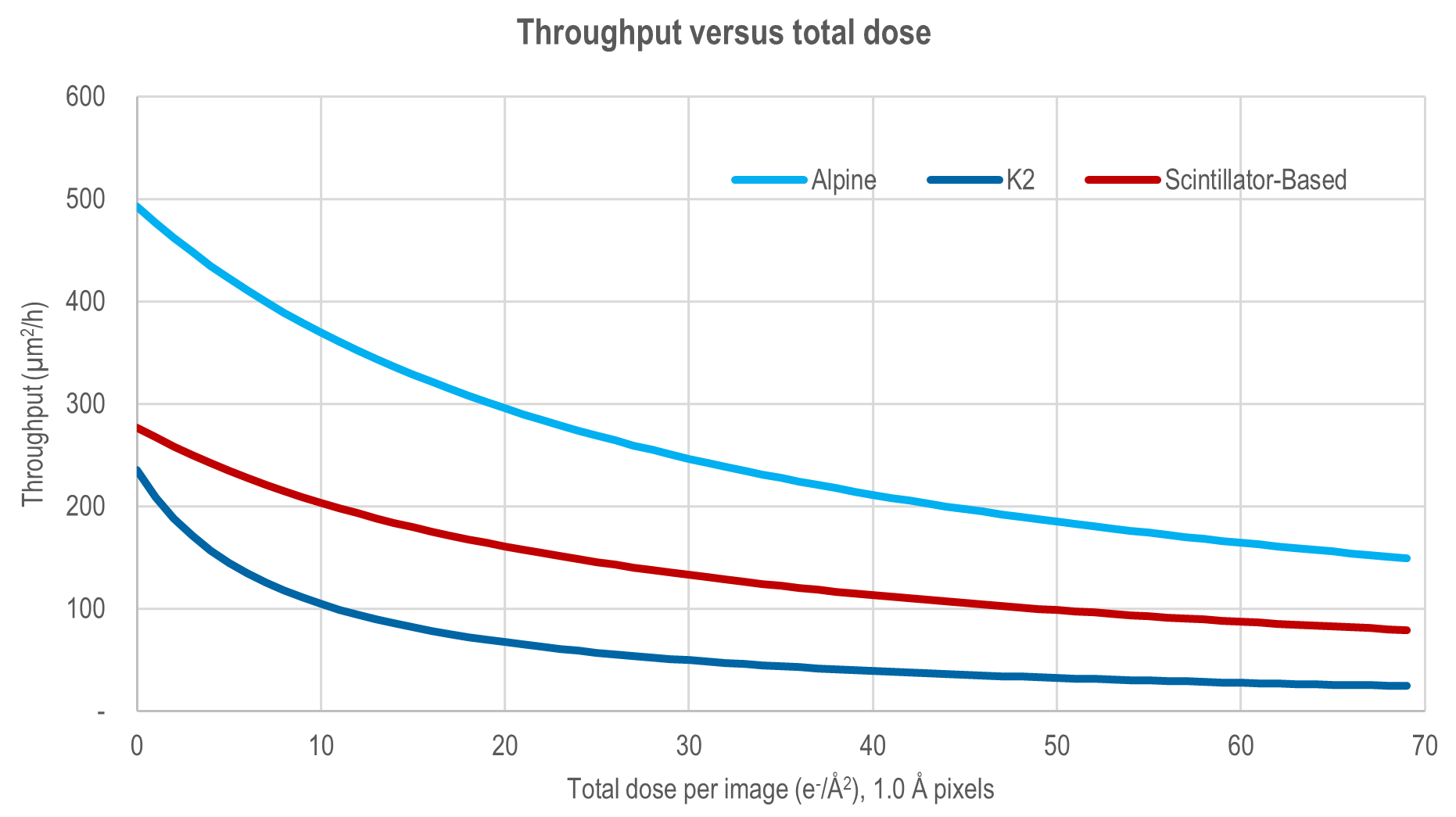The Alpine® is the world’s first direct detection camera from Gatan to democratize cryo-EM.
Advantages
Alpine is a pioneering direct detection camera that revolutionizes cryo-electron microscopy (cryo-EM) accessibility.
By facilitating the capture of high-resolution structures on 100 – 200 keV microscopes, Alpine enables routine cryo-EM research on more economical, widely used instruments, thus broadening its utility within the research community.
- Achieves a detective quantum efficiency (DQE) that surpasses scintillator-based cameras by up to 2.4 times.
- Regularly acquires high-resolution data on 100 – 200 keV microscopes, transforming screening instruments into reliable data collection tools.
- Enables 2D classification of small molecules and enhances macromolecule reconstructions.
- Optimizes workflow efficiency and identifies issues early, leading to faster production of superior structures.
- Real-time counting ensures a seamless balance between data collection speed and quality, eliminating compromises.

Transthyretin resolved to 4.6 Å at 100 keV. Transthyretin (55 kDa) resolved to 4.6 Å at 100 keV acquired with an Alpine camera on a Talos F200C (equipped with an SFEG) using CDS at ~5.2 e-/pixel/s. The study used a Gatan model 626 side-entry holder for all samples and Leginon for data acquisition. Data courtesy Gabe Lander, The Scripps Research Institute.

Throughput versus total dose comparison. When combined with Latitude software, Alpine delivers high-quality data at the highest imaging throughputs from 100 – 200 keV. Image Credit: Gatan, Inc.

Aldolase resolved to 3.07 Å at 100 keV. Aldolase (100 kDa) resolved to 3.07 Å at 100 keV acquired with an Alpine camera on a Talos F200C (equipped with an SFEG) at 45kx (0.851 Å/pixel) using CDS at ~5.2 e-/pixel/s, 100 ms frames, 10 frames/s. Samples were prepared by manual plunging samples onto glow discharged Quantifoil UltrAuFoil grids with 1.2 μm holes spaced 1.3 μm apart. The study used a Gatan model 626 side-entry holder for all samples and Leginon for data acquisition. Data courtesy Gabe Lander, The Scripps Research Institute.

Apoferritin resolved to 2.7 Å at 100 keV. Apoferritin (550 kDa) resolved to 2.7 Å at 100 keV acquired with an Alpine camera on a Talos F200C (equipped with an SFEG) at 45kx (0.851 Å/pixel) using CDS at ~5.2 e-/pixel/s, 100 ms frames, 10 frames/s. Samples were prepared by manual plunging samples onto glow discharged Quantifoil UltrAuFoil grids with 1.2 μm holes spaced 1.3 μm apart. The study used a Gatan model 626 side-entry holder for all samples and Leginon for data acquisition. Data courtesy Gabe Lander, The Scripps Research Institute.